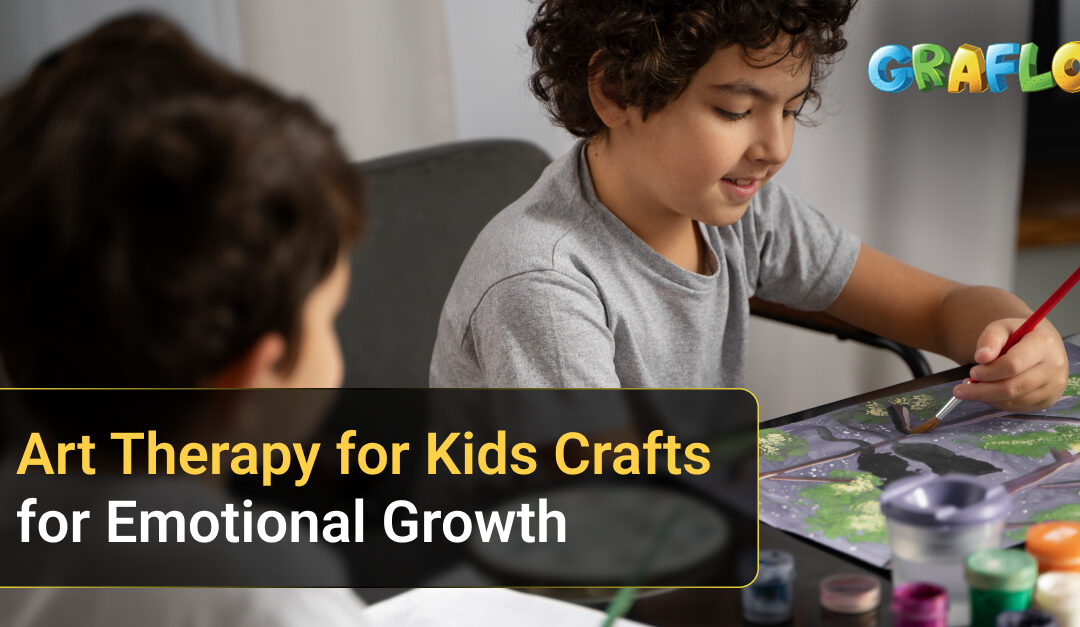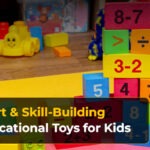In today’s fast-paced world, children experience emotions just as deeply as adults do. From dealing with school stress to navigating friendships and family dynamics, kids often face emotional challenges they might not have the words to express. That’s where art therapy for kids comes in, a creative, nurturing approach that allows children to express themselves freely through painting, crafting, drawing, and imaginative play.
Art therapy is more than just fun with colors and glue; it’s a form of emotional expression, communication, and healing. Through guided art activities, children can process feelings, improve focus, and build self-esteem, all while creating something beautiful with their hands.
Understanding Art Therapy for Kids
Art therapy combines psychological techniques with creative expression to help children explore their emotions. Unlike traditional talk therapy, which can feel intimidating, art therapy for kids creates a safe and engaging space for self-discovery.
A certified art therapist guides the child through activities that encourage emotional release and reflection. For example, drawing feelings, creating emotion masks, or crafting vision boards can help kids make sense of what’s going on inside. These creative outlets help therapists and parents gain insight into a child’s world, something that words alone often can’t capture.
Art therapy isn’t only for children struggling with anxiety, depression, or trauma. It’s also beneficial for developing emotional intelligence, resilience, and mindfulness in all kids. Whether your child is shy, hyperactive, or simply loves art, creative expression can strengthen their mental well-being.
Why Art Therapy Works for Kids
Art therapy works because it meets children where they are, through play and creativity. When a child paints, draws, or builds something, their brain engages both hemispheres: the left (analytical) and the right (creative). This balance promotes cognitive development, emotional regulation, and problem-solving skills.
Here’s how art therapy for kids nurtures emotional growth:
1. Encourages Emotional Expression
Children often lack the vocabulary to describe how they feel. Through art, they can show sadness, joy, anger, or fear without saying a word. A simple drawing can reveal complex emotions that a child might not express verbally.
2. Builds Confidence
Completing a piece of art gives children a sense of accomplishment. Whether it’s a paper collage or a clay sculpture, seeing their creative ideas come to life boosts their self-esteem.
3. Reduces Stress and Anxiety
Art is calming. Coloring repetitive patterns, mixing paint, or molding clay can help reduce anxiety and promote relaxation. For children who struggle with ADHD or sensory processing disorders, art therapy provides a healthy outlet for emotional release.
4. Improves Focus and Patience
When kids engage in crafting or painting, they naturally learn to focus and stay patient. The step-by-step process of creating something teaches discipline and perseverance.
5. Strengthens Parent-Child Bonds
Art therapy can be done together at home. Collaborative art projects, like building a colorful mosaic or painting a mural, strengthen emotional connections between parents and children.
Creative Projects to Support Emotional Well-Being
Art therapy doesn’t always require a professional therapist. Parents and teachers can easily introduce art-based emotional exercises at home or in the classroom. Here are some craft ideas inspired by the principles of art therapy for kids that promote mindfulness and self-expression.
1. Emotion Collage
Have your child cut out pictures or words from magazines that represent how they feel. They can paste these on a piece of cardboard to create a collage of emotions. Discuss the final result to help them verbalize their thoughts.
You can use the colorful paper and sticker sets from the DIY Paper Craft Kit to make this activity more exciting for kids.
Therapeutic benefit: Helps children identify and label emotions, improving emotional awareness.
2. Feelings Mandala
Give your child a round sheet of paper and encourage them to create a mandala using patterns, colors, and shapes that reflect their mood. Mandalas are circular designs used for meditation and emotional balance.
Therapeutic benefit: Promotes mindfulness, focus, and emotional regulation.
3. Gratitude Jar Craft
Ask your child to decorate a jar using paint, ribbons, and stickers. Every day, they can write something they’re thankful for on a small piece of paper and drop it into the jar. Over time, this creates a beautiful collection of positive moments.
Therapeutic benefit: Encourages gratitude and positivity, reducing anxiety and negativity.
4. Worry Dolls or Clay Friends
Children can use modeling clay or yarn to create “worry dolls” or small clay figures that represent their emotions. Once made, they can talk to their dolls or write stories about them.
The Clay Modeling Set provides colorful, non-toxic clay perfect for making emotion-based crafts at home.
Therapeutic benefit: Provides a tangible way to process and externalize difficult emotions.
5. My Safe Place Drawing
Have your child draw a place where they feel safe and happy. It could be their bedroom, a beach, or an imaginary world. Let them use markers, crayons, and glitter to bring it to life.
Therapeutic benefit: Creates emotional comfort and helps children visualize peace and safety.
Using Graflo Toys for Creative Emotional Growth
Creative play tools can make art therapy activities more engaging for children. Graflo Toys, known for its high-quality and educational craft kits, offers several options that perfectly align with the goals of art therapy for kids.
For instance, the Graflo DIY Art Box provides a variety of paints, brushes, and craft materials that encourage open-ended creativity. Children can use this kit to paint their emotions or create story-based art that reflects how they feel.
Similarly, the Graflo Bracelet Making Kit helps improve concentration and fine motor skills. Making jewelry or keychains from colorful beads allows children to express their personality and creativity while calming their minds.
These products not only spark joy but also support the therapeutic aspects of creative expression, making them ideal tools for emotional development at home.
Incorporating Art Therapy into Daily Life
You don’t need to wait for a structured session to introduce art therapy principles. Here are a few ways to make creativity part of your child’s everyday emotional care routine:
1. Creative Journaling
Encourage your child to keep an art journal. Each day, they can draw or paint something that represents their emotions. Over time, it becomes a visual diary that shows growth and resilience.
2. Storytelling Through Art
Ask your child to illustrate their favorite story or make up one of their own. This activity helps them process real-life situations through imagination.
3. Art in Nature
Take art outdoors! Let kids collect leaves, flowers, and stones to make natural art pieces. Nature-based crafting enhances mindfulness and connection to the environment.
4. Crafting for Giving
Teaching children to make handmade gifts for others builds empathy and kindness. A hand-painted card or a homemade friendship bracelet can boost both the giver’s and receiver’s happiness.
5. Family Art Nights
Once a week, host a family art night. Everyone can join in to paint or build something creative. Not only does it promote bonding, but it also shows kids that expressing feelings through art is valued and celebrated.
The Psychological Benefits of Art Therapy
Decades of research show that art therapy for kids leads to measurable improvements in emotional and behavioral health. Studies reveal that creative expression helps regulate the nervous system, lower cortisol levels, and enhance mood stability.
For children dealing with anxiety, trauma, grief, or social difficulties, art provides a non-judgmental outlet. By externalizing feelings, drawing their “worries” or sculpting their “happy place,” kids gain control over their emotions rather than feeling overwhelmed by them.
Even in educational settings, teachers have found that introducing art therapy techniques helps improve classroom behavior, focus, and empathy among students.
Turn Art Time into Heart Time
If you’re a parent looking to integrate art therapy for kids at home, remember that the goal isn’t to make “perfect” art; it’s to create a safe emotional space. Here’s how you can help:
- Be encouraging, not evaluative. Avoid judging or correcting their art. Simply ask open-ended questions like, “Tell me about this picture.”
- Join in the fun. Doing the activities together strengthens connection and trust.
- Create an art-friendly space. Set up a small corner with paper, colors, glue, and craft supplies.
- Use art as a conversation starter. Art can open up meaningful discussions about feelings and experiences.
- Celebrate the process, not the product. Focus on how the activity makes them feel rather than how the final piece looks.
Conclusion: The Healing Power of Creativity
Art is a universal language, and for children, it’s the most natural way to express what words can’t. Through colors, textures, and imagination, art therapy for kids helps them make sense of their emotions, build confidence, and discover joy in self-expression.
So next time your child reaches for crayons or paints, remember, it’s not just playtime. It’s a form of therapy, one that nurtures their heart as much as their creativity.






